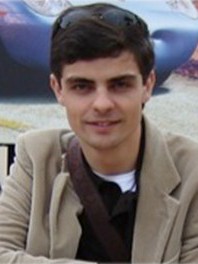abstract
RATIONALE Glycophthalocyanines have a great promising potential in many scientific areas. However, their structural characterization is not an easy task. To overcome this drawback, it is urgent to develop simple and efficient methodologies to characterize this type of compounds. In this work, we describe the use of matrix-assisted laser desorption/ionization mass spectrometry (MALDI-MS) and MALDI-MS/MS of the [M+H]+ to distinguish between two isomeric glycophatholocyanines bearing four galactose units with protected (1a and 2a) or unprotected hydroxyl groups (1b and 2b). METHODS The MALDI-MS and MALDI-MS/MS spectra were acquired using a MALDI-TOF/TOF Applied Biosystems 4800 Proteomics Analyzer instrument equipped with a nitrogen laser and using dithranol as matrix. Computational studies were performed in order to gain insights into the mechanisms underlying the different fragmentation pathways observed for the isomeric species. RESULTS The fragmentation pattern observed in MALDI-MS/MS spectra of the [M+H]+ ion was dependent on the peripheral distribution of the sugar units. Phthalocyanines (Pcs) with a sugar unit in each isoindole ring show the typical loss of sugar units (cleavage of C6O bond) while Pcs with the four sugar units linked to the same isoindole ring show a major and unusual fragmentation pathway corresponding to the cleavage of the C5C6 bond of the sugar units. This type of fragmentation is not usually observed in the MS/MS of oligosaccharides. CONCLUSIONS MALDIMS is a valuable tool for the structural characterization/differentiation of isomeric glycophthalocyanines. Copyright (c) 2013 John Wiley & Sons, Ltd.
keywords
PHTHALOCYANINE SHEET POLYMER; VITRO PHOTODYNAMIC ACTIVITY; GLYCOPORPHYRINS; MS; PHOTOSENSITIZERS; FRAGMENTATIONS; PORPHYRINS; THERAPY
subject category
Biochemistry & Molecular Biology; Chemistry; Spectroscopy
authors
Soares, ARM; Neves, MGPMS; Santos, SM; Tome, JPC; Tome, AC; Cavaleiro, JAS; Torres, T; Domingues, MRM
our authors
acknowledgements
Thanks are due to Fundacao para a Ciencia e a Tecnologia (FCT), COMPETE and FEDER for the financial support provided to projects PTDC/QUI/74150/2006, PTDC/QUI-QUI/100044/2008 and PEst-C/QUI/UI0062/2011 and also to the Portuguese Mass Spectrometry Network (RNEM) (REDE/1504/REM/2005). A. R. M. Soares and S. M. Santos also thank FCT for the grants SFRH/BD/29362/2006 and SFRH/BPD/64752/2009, respectively. Financial support by the MICINN, Spain (CTQ2011-24187/BQU, CONSOLIDER-INGENIO 2010 CDS 2007-00010, PLE2009-0070), and CAM (MADRISOLAR-2, S2009/PPQ/1533) is gratefully acknowledged.


